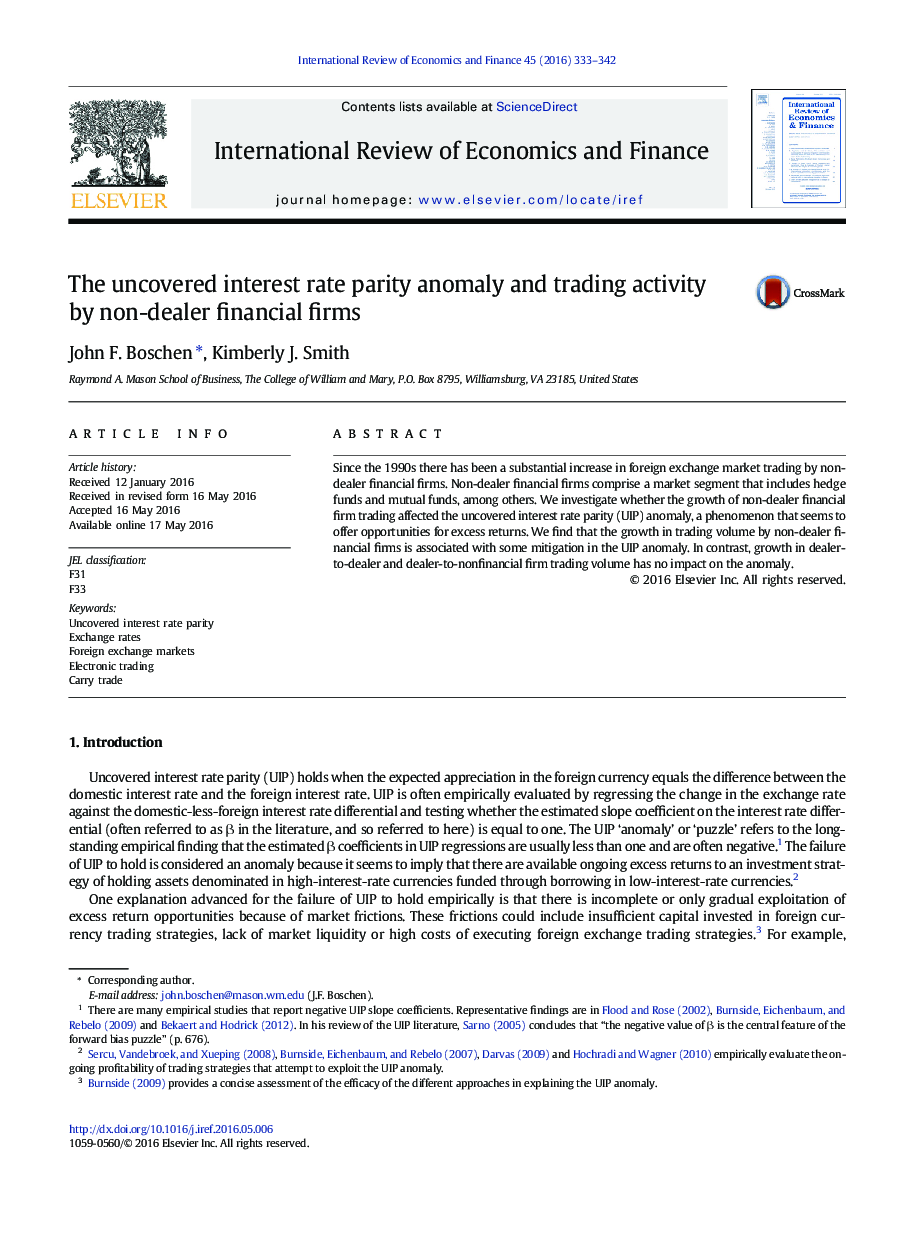| Article ID | Journal | Published Year | Pages | File Type |
|---|---|---|---|---|
| 5083283 | International Review of Economics & Finance | 2016 | 10 Pages |
â¢Foreign exchange markets have experienced rapid growth in trading by non-dealer financial firms.â¢We hypothesize that these new market participants are likely to exploit the excess returns from the uncovered interest rate parity (UIP) anomaly.â¢Empirical study of six major currency pairs over 1992-2010 shows that increased trading by non-dealer financial firms mitigates the UIP anomaly.â¢In contrast, the growth in interdealer and retail-related foreign exchange trading has no impact on the UIP anomaly
Since the 1990s there has been a substantial increase in foreign exchange market trading by non-dealer financial firms. Non-dealer financial firms comprise a market segment that includes hedge funds and mutual funds, among others. We investigate whether the growth of non-dealer financial firm trading affected the uncovered interest rate parity (UIP) anomaly, a phenomenon that seems to offer opportunities for excess returns. We find that the growth in trading volume by non-dealer financial firms is associated with some mitigation in the UIP anomaly. In contrast, growth in dealer-to-dealer and dealer-to-nonfinancial firm trading volume has no impact on the anomaly.
